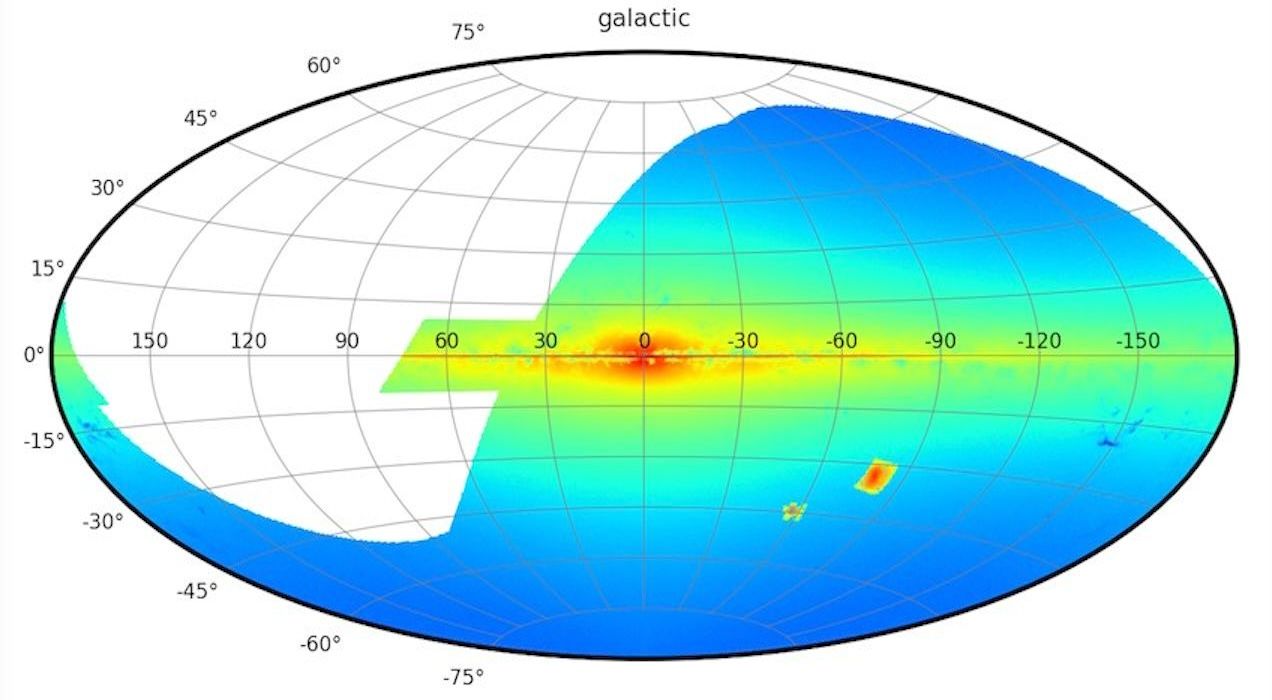LSST SIM
LSST SIM

Description
The LSST SIM tables contain a large simulation, based on the TRILEGAL code, of the stars to be observed by the Vera C. Rubin Observatory Legacy Survey of Space and Time (LSST). TRILEGAL uses databases of stellar evolutionary tracks, synthetic spectra, and pulsation models, added to simple prescriptions for the stellar density and star formation histories of the main structures of the Galaxy, to generate mock stellar samples through a population synthesis approach.
LSST SIM provides tables containing a complete simulation for single stars in the Milky Way and Magellanic Clouds down to a depth of r=27.5 mag, equivalent to the co-added depth from the Wide-Fast-Deep portion of the LSST survey. LSST SIM also provides a table for a subset of the anticipated binary systems, including interacting ones, as derived with the BinaPSE module of TRILEGAL.
Scientific Goals
The goal of LSST SIM is to aid in the preparation and interpretation of analyses of the Rubin LSST survey by providing a simulation of all stars that will be visible in the final stacked LSST images across the LSST footprint.
Data Releases
LSST SIM DR2
LSST SIM Data Release 2 (DR2) supersedes Data Release 1 (DR1), which did not include the Magellanic Clouds or information on binary systems. DR1 also contained some spurious artifacts that have been corrected in DR2.
| LSST SIM at a Glance | ||||
|---|---|---|---|---|
| Table | Area | Bands | Depth | Row Count |
| simdr2 | ∼27,000 deg² | ugrizY, Gaia G,Bp,Rp | ∼27.5 mag | 11,433,322,690 |
| simdr2_binary | ∼27,000 deg² | ugrizY, Gaia G,Bp,Rp | 659,455,991 |
Data Access
 Figure: Object number density (per square degree) in Mollweide projection for LSST SIM in Galactic coordinates.
Figure: Object number density (per square degree) in Mollweide projection for LSST SIM in Galactic coordinates.
The LSST SIM data are accessible by a variety of means:
Data Lab Table Access Protocol (TAP) service
TAP provides a convenient access layer to the LSST SIM catalog database. TAP-aware clients (such as TOPCAT) can point to https://datalab.noirlab.edu/tap, select the lsst_sim database, and see the database tables and descriptions. You can also view the LSST SIM tables and descriptions in the Data Lab table browser.
Data Lab Query Client
The Query Client is available as part of the Data Lab software distribution. The Query Client provides a Python API to Data Lab database services. These services include anonymous and authenticated access through synchronous or asynchronous queries of the catalog made directly to the database. Additional Data Lab services for registered users include personal database storage and storage through the Data Lab VOSpace.
The Query Client can be called from a Jupyter Notebook on the Data Lab Notebook server. Example notebooks are provided to users upon creation of their user account (register here), and are also available to browse on GitHub at https://github.com/astro-datalab/notebooks-latest.
Jupyter Notebook Server
The Data Lab Jupyter Notebook server (authenticated service) contains several examples of how to access and visualize the LSST SIM catalog:
- Color-magnitude and color-color diagrams of the South Galactic Pole
- Combining single and binary models: the South Galactic Pole
Acknowledgments
Those who use LSST SIM data products should cite Dal Tio et al 2022.
